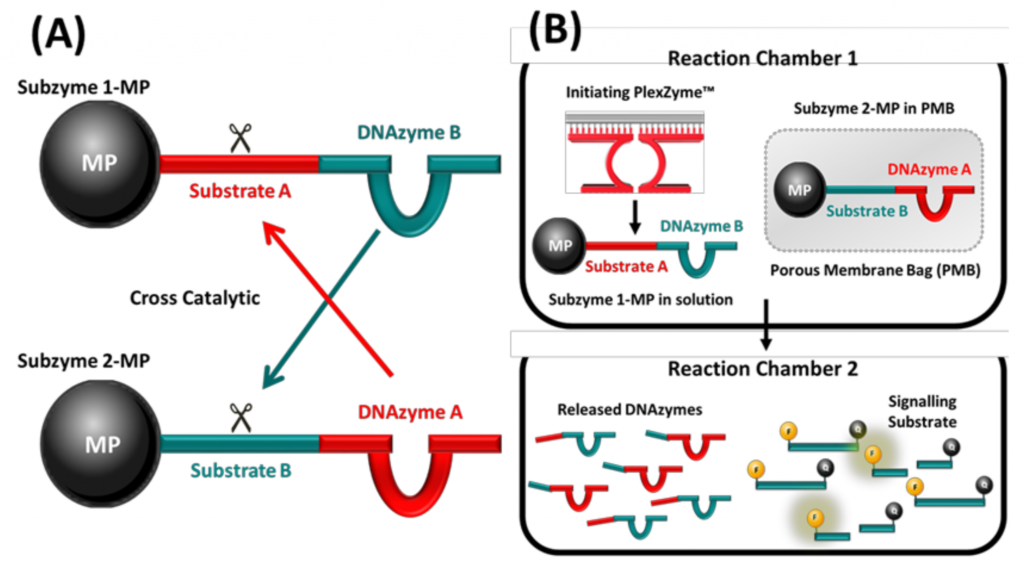
SpeeDx Blue Sky Research Team Publish Novel Research
SpeeDx is committed to continually improving and innovating diagnostics with ongoing advances spun out of our remarkable Blue Sky Research team. Our scientists are investigating an isothermal, protein-enzyme-free approach to target detection by improving the sensitivity of DNAzymes in detecting nucleic acids. Latest advances have just been published in Molecules, titled ’Sensitive Detection of Nucleic Acids Using Subzyme Feedback Cascades’.
This publication looks at the development of Subzymes, demonstrating how the catalytic activity of DNAzymes can be controlled for detecting nucleic acids; however, Subzymes alone lack the sensitivity required to detect low target concentrations. To improve sensitivity, a feedback system was developed using a pair of cross-catalytic Subzymes. These were individually tethered to microparticles (MP) and separated by a porous membrane rendering them unable to interact. In the presence of a target, active PlexZymes® cleave a first Subzyme, which separates a first DNAzyme from its MP, allowing the DNAzyme to migrate through the membrane, where it can cleave a second Subzyme. This releases a second DNAzyme which can now migrate through the membrane and cleave more of the first Subzyme, thus initiating a cross-catalytic cascade. Activated DNAzymes can additionally cleave fluorescent substrates, generating a signal, and thereby, indicating the presence of the target. The method detected 1 fM of DNA homologous to the ompA gene of Chlamydia trachomatis within 30 min, demonstrating a 10,000-fold increase in sensitivity over PlexZyme detection alone. The Subzyme cascade is universal and can be triggered by any target by modifying the target sensing arms of the PlexZymes. Further, it is isothermal, protein-enzyme-free and shows great potential for rapid and affordable biomarker detection.
View the full publication here

